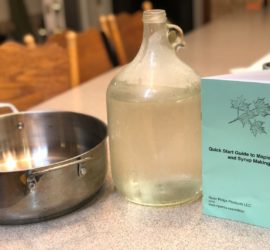PFAS & C8: Perfluoroalkyl and Polyfluoroalkyl Substances
The term PFAS refers to a large group of synthetic chemicals that includes PFOA and PFOS. This family of man-made compounds also includes hundreds of other chemicals, all of which are similar but have slightly different chemical structures and properties. What all per- and polyfluoroalkyl substances have in common is that they comprise a chain of carbon and fluorine atoms. Additionally, they have similar uses and applications in the manufacturing process. In fact, the per- and polyfluoroalkyl substances exist in a variety of products for their water, oil, grease, and stain-repelling properties. Updated April 9, 2024.
Other Chemical Names
Occasionally, the term PFC (perfluorinated chemical) was in reference to PFAS. This can be confusing because PFC also refers to “perfluorocarbons” which are non-toxic themselves but are considered a greenhouse gas, and thus affect the environment in different ways. However, the EPA is now encouraging the consistent use of “PFAS” when referring to perfluoroalkyl and polyfluoroalkyl substances.
PFAS Chemical Properties & Behavior
The perfluoroalkyl and polyfluoroalkyl substances all have an alkyl chain that typically comprises two to sixteen carbon atoms in length. And the perfluoroalkyl compounds are the most highly fluorinated because the fluorine atoms bond to all the carbon atoms in the alkyl chain. On the other hand, the polyfluoroalkyl compounds have some hydrogen and some fluorine atoms that bond to the alkyl chain. In general, perfluoroalkyl and polyfluoroalkyl substances with shorter carbon chains are more water-soluble than those with longer lengths. And the substances with longer carbon chains (C8 for example) tend to attach to soils more easily. Because of the variability in alkyl chain lengths, these substances can share many core similarities, however, behave differently in the environment.
Uses of PFAS
PFAS has a wide range of commercial, industrial, military, and household uses. Major uses of PFAS utilize their resistance to oil and water. For instance, non-stick cookware, water-repellent clothing, and stain-resistant carpets. Other typical applications include protective coatings on cars and firefighting foam. In the United States, as well as most parts of the world, manufacturers are phasing out the use use of PFAS.
Pollution & Contamination
PFAS has been in use since the 1940s. As a by-product of the manufacturing process, significant levels of contamination to soil, groundwater, and surface water occurred worldwide. Consequently, various drinking water resources, as well as human and animal bodies, comprise C8 and PFAS. Unfortunately, this contaminant is “biopersistent,” meaning it does not degrade easily in the environment and is not readily metabolizable by living organisms. For these reasons, PFAS is recognized as an emerging chemical of concern, and ongoing research aims at determining the long-term effects of these substances along with safer alternatives for the future.
PFAS Test
Environmental professionals are able to test for PFOA and PFOS. In fact, a C8 test is performable on bodies, as well as environmental media, such as soil and water.
Information Sources:
Agency for Toxic Substances and Disease Registry
Basic Info by the United States Environmental Protection Agency
Fact Sheet by the United States Environmental Protection Agency
National Institute of Environmental Health Sciences





